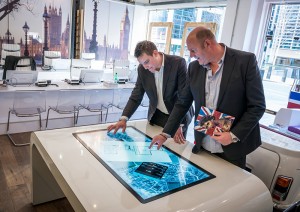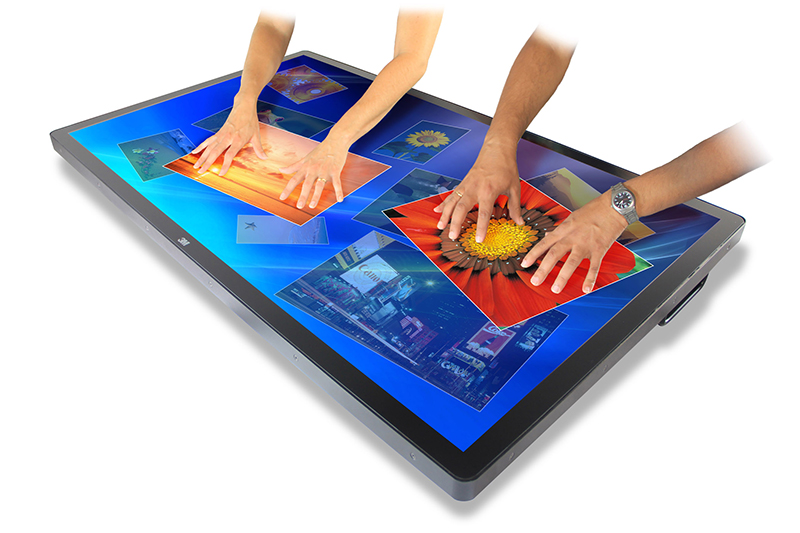Readers will hardly need reminding that car buyers are a demanding audience that tend to know their facts. Thanks to the sheer volume of information sources now available, they increasingly have a clear idea of what they want by the time they reach the showroom. This can be good news and bad news: a customer who knows his or her mind can help to close a sale, but it leaves less room for the sales staff to suggest other options and upgrades, or the chance that the purchaser will bypass the showroom altogether.
Nearly one third (31%) of under 35-year-olds would buy a new a car directly via the Internet, according to research carried out by GfK in 2013. Indeed, the world of digital communications has changed the way that people research their car purchases, starting with the Internet and only visiting the showroom a matter of weeks before the final decision is made.
 Turning digital communications to the showroom’s advantage
Turning digital communications to the showroom’s advantage
Of course, most car brands are becoming more switched on to the need for multi-channel marketing strategies that embrace every possible touch point, whether in-store or not. Plus, once someone is enticed into the nearest showroom or dealership, the online digital experience can be turned to the brand or dealership’s advantage.
While not specific to the automotive industry, a recent survey released by Deloitte in its ‘New Digital Divide survey’ revealed that more than a third of in-store purchases are now influenced by digital touch-points, with one in four shoppers spending more as a result. This makes bridging the gap between online and offline more relevant than ever.
By extending the online experience in-store, brands and dealers have the potential to engender a more interactive dialogue with customers, make better use of space and add to overall ‘brand value’.
Let’s start with that point. We all know that many consumers buy into the brand, particularly at the premium end of the market. A person’s choice of car make reflects his or her lifestyle choices and how they see themselves. Car brands are increasingly looking at ways in which to sell an immersive customer experience – whether online or in-showroom – one that is less directly focused on making an immediate sale.
The multi-touch experience
This is why a number of car brands – including two of Europe’s top three car companies – have turned to multi-touch display technology as a means of enhancing the in-store customer engagement and as an integral part of their multi-channel marketing strategies. Typically ranging from 20 to 46 inches, these devices make a real impact that is hard to miss. They are easy to interact with and multi-touch screens are a very intuitive evolution of the existing online environment with which many of us are already familiar.
After all, most of us are used to ‘dual touch’ technology on our smartphones, tablets and laptops. Multi-touch technology takes that a whole step further, creating a multi-user experience where a number of people can interact at the same time (current systems support up to 60 simultaneous touch points).
Car brands which have already installed multi-touch display systems are using them to share a wide range of enticing content. This can include the obvious – videos, details of online accessories – but also a whole range of other material, for example, games based on the car brand, links to motor racing sponsorship content, competitions, virtual reality tours and offers. All of this can help to create a ‘storytelling’ environment, one where consumers can relate to – and see themselves in – a vehicle, rather than just being given a dry list of features and benefits. Think of this as in-store theatre.

Expanding the showroom floor
Plus, the user is in control: he or she can use their fingers to navigate and interact with a wealth of content that is designed to be an enjoyable experience in its own right, not just sales information. Suddenly, the in-store brand experience goes way behind the confines of the showroom’s four walls, ‘virtually’ extending the size of the space available. And the use of this leading-edge technology underlines the innovative focus of a car brand.
After all, today’s new generation of car buyers has grown up with digital technology: people no longer expect to be presented with printed brochures which by their two-dimensional, static nature, are limited in terms of what they can provide. The systems can also interact with mobile devices – for instance, using QR codes to download information to the customer’s smartphone or tablet.
There are three main ways in which car brands are using multi-touch technology. First, as a centrepiece on the showroom floor, one that could also be taken to events, creating a multi-faceted brand experience. Second, as a digital signage solution in a car showroom’s waiting area, whether installed within a tabletop or as a wall-mounted unit, giving customers the option to engage with the system, rather than just watching a standard video showreel. Third and finally, as a sales demonstrator system.
Helping the sales team
While much of multi-touch technology’s benefit is around creating an interactive customer experience, its value as a sales support aid is just as important. A system can provide the means to explain something in more detail, to draw a customer’s attention to new offers or product ranges and help close a sale there and then. It also helps to ensure that a brand’s key messages and value propositions are cascaded down through showrooms and sales staff in a consistent manner.
One potentially very exciting application for multi-touch technology is as a car configuration tool, something which one of Europe’s top three car brands is already doing. Given the sheer volume of configuration options now available, multi-touch systems can provide sales consultants with a chance to sit alongside consumers while they go through a number of steps to design each person’s ideal vehicle. The very last step presents the price and here’s the clever psychology: the theory is that in effect the customer has ‘created’ that price and hence is less likely to argue with that amount.
Finally, technology can also help with the process of collecting customer data information, because multi-touch systems can be integrated with back-end systems elsewhere, such as databases and CRM to gather information about user behaviour and analyse sales patterns.
Specifying the experience
Of course, technology is just one element of a successful and compelling multi-touch experience; there is a whole host of other factors to consider. These include how the display will be incorporated into the showroom: is a wall-mounted system better for space-saving or will a table-top design encourage more interaction? Does the system need to be portable?
Regardless of screen size, generally speaking it is advisable to go for as many touch points as possible; systems that only support one or two touches significantly limit what the software can do. Choose a display that has accuracy of touch; there is nothing more frustrating for users than an unresponsive screen. There is a growing community of consultants, software developers and systems integrators within Europe and worldwide who are working closely with car brands and dealerships to design and install systems that best fit each individual need.
Multi-touch is in its infancy. While some of the big players are leading the way, other car brands and dealerships are only just beginning to explore the potential of touch technology. However, as it continues to evolve, it promises to help marketers edge closer to the seamless, multi-channel shopping experience that consumers – including car owners – demand. Of course, interactive touch systems are just one facet in the automotive sales toolbox – and getting customers into the showroom is the first part of the battle – but once they are there, multi-touch systems can present a powerful way to improve customer engagement.

